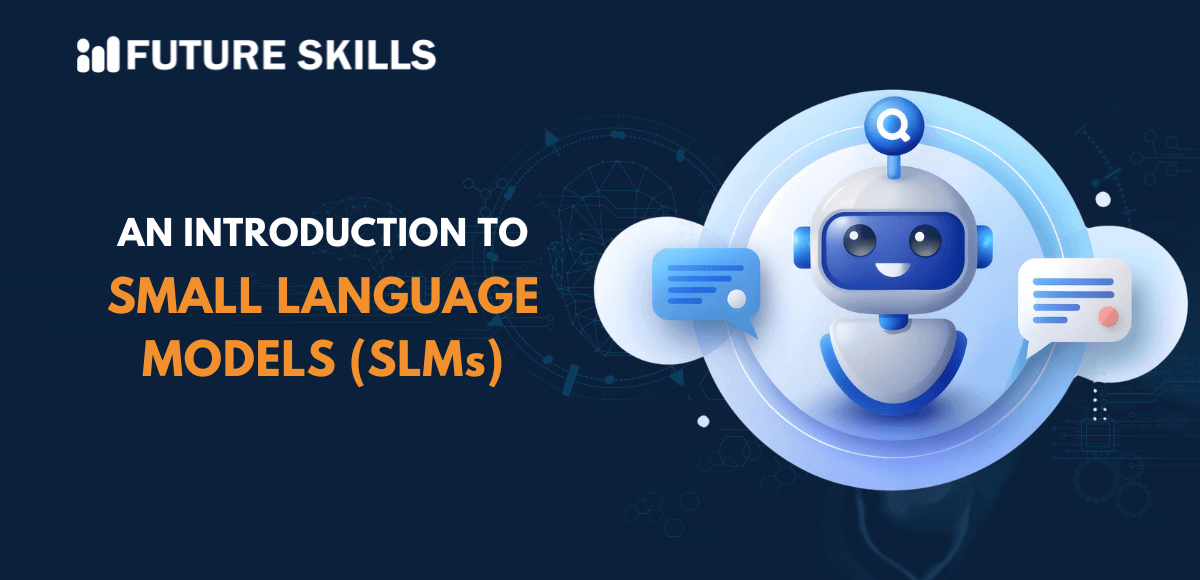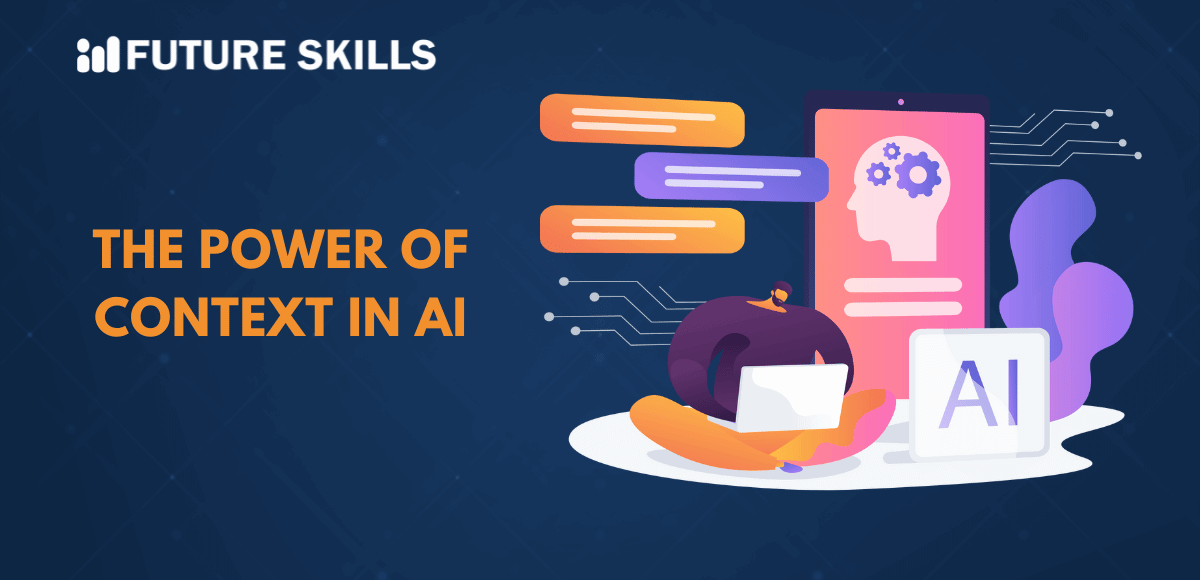The technological advancements in LLMs have become the most prominent highlights in the AI landscape. As the number of parameters increases, LLMs come up with new capabilities that seem impossible to achieve. It is also important to note that discussions on small language models SLMs have been gaining momentum due to the limitations of LLMs. Small language models have come up with a promising solution to the drawbacks associated with the sheer size of LLMs.
Large Language Models or LLMs can handle complex tasks with the power of billions or even trillions of parameters albeit with significant limitations. The foremost limitations of LLMs include limited accessibility, need for expanded storage, and massive demands for computational power. Small language models can offer an answer to all these setbacks and help you make the most of AI in environments with resource constraints. Let us learn more about SLMs and their implications for the continuously evolving AI ecosystem.
Become an AI specialist by taking our most popular AI Certification Course. This course will help you learn the core concepts of AI from a fundamental to an advanced level.
Understanding the Fundamentals of SLMs
The best way to learn about small language models begins with an understanding of their definition. Most of the answers to questions like ‘What are the small language models?’ focus on the use of SLMs for specific tasks. Small language models are a variant of foundation models trained with smaller datasets than those used in large language models. The primary trait of SLMs is the use of selective and curated data sources for their training.
Small language models rely on their focused training on smaller datasets to understand the intricacies and nuances of specific industries. SLMs can tap into the unparalleled potential of AI with more accuracy and better quality of results alongside higher computational efficiency. You must also note that SLMs can offer faster training with their compact architecture that guarantees resourceful use of computational power. The specificity and efficiency of SLMs makes them more useful for specific language tasks as compared to LLMs.
Discovering the Working Mechanism of SLMs
The working mechanism of small language models is another crucial aspect that you must consider to understand their specialty. As you can notice in the definition of SLMs, they have been created to offer accurate and efficient NLP capabilities with reduced resource consumption. Every small language models guide would help you find out that SLMs have the same foundational principles as LLMs. However, small language models use the following specialized techniques to enhance their efficiency for domain-specific tasks.
-
Model Compression
Model compression techniques are a critical element in the architecture of small language models for reducing size and computational needs. The different model compression techniques include pruning, low-rank factorization, and quantization, tailored to achieve unique objectives. Pruning involves the removal of less critical parameters to enable SLMs to work with fewer parameters without compromising on performance.
Quantization focuses on reduction of precision in model parameters to increase the speed of computations alongside reducing the memory footprint of the model. The low-rank factorization technique aims to improve the speed of the model through simplification of complex matrix operations.
-
Knowledge Distillation
The effectiveness of small language models also depends on the knowledge distillation technique. It involves a smaller model learning from a larger, pre-trained model like a student learns from a teacher. The power of small language models AI functionalities depends on effective training of the student model alongside other knowledge distillation techniques. The student model can learn how to imitate the output of the teacher model by capturing the important patterns and knowledge.
SLMs can become more effective at specific tasks by squeezing knowledge or refining the expertise of the teacher model into smaller models. It helps the SLM capitalize on the comprehensive knowledge base of the teacher model without increasing computational resource requirements or model size. Knowledge distillation also empowers SLMs to maintain the same level of performance as the teacher model. SLMs can use the power of decision-making strategies and insights of the teacher model to work effectively on domain-specific tasks.
-
Direct Preference Optimization
Direct preference optimization is also another important aspect in the working mechanism of small language models. Small language models use direct preference optimization for fine-tuning the model to perform specific tasks. Direct preference optimization can help in improving efficiency of SLMs with better efficiency, task-specific tuning, and customized solutions. Task-specific tuning involves optimization of the model to the requirements and preferences associated with specific tasks.
Direct preference optimization also improves the efficiency of SLMs by focusing directly on specific tasks. It helps in reducing computational overheads alongside enhancing the effectiveness of the SLM in the desired applications. The most important advantage of direct preference optimization is the customization of models according to operational needs alongside ensuring efficient use of resources.
-
Innovative Architectures
The effectiveness of small language models also depends on the use of innovative architectures. You can come across various small language models examples with diverse benefits due to their architecture. The most noticeable examples of architectures employed in SLMs include Transformer-XL and Linformer. Transformer-XL is a variant of standard transformer models with mechanisms to manage longer dependencies and contexts with better efficiency.
Linformer brings a new take on the conventional transformer structure through linear complexity attention mechanisms. The modification reduces the computation and memory requirements for attention operations, thereby making the architecture useful for smaller models. You can also implement specialized architectures in small language models according to specific tasks or limitations.
Learn about the Top Large Language Models and discover their working mechanisms to find the right option for you.
Unraveling Few Examples of Small Language Models
The introduction to small language models would be incomplete without learning about the top examples of SLMs. One of the most notable examples among popular SLMs is the PHI-3 family of open models. The small language models have impressive reasoning and logic abilities tailored for summarizing documents. PHI-3 also stands out for offering the assurance of privacy, inclusiveness, security and reliability.
Mixtral is also another notable example you might come across in a small language models guide for beginners. It allows you to select parameters from different sets for processing each token or part of a sentence. Mixtral can serve as a LLM albeit using only a small portion of its true potential.
Another promising example of small language models in the world right now is Llama 3 by Meta. It has better reasoning capabilities and offers the assurance of top-tier performance on different industry benchmarks. You can come across the impressive functionalities of Llama 3 in Meta AI accessible through WhatsApp or Instagram. Users can obtain real-time information from the internet with Meta AI without the need to switch to new apps.
Identifying the Advantages of Small Language Models
The definition, working mechanism, and examples of small language models reveal that SLMs are better than LLMs for domain-specific tasks. You must have figured out that small language models outperform LLMs on the basis of different aspects. The following benefits of small language models can help you identify the reasons to embrace SLMs in different industries.
-
Precision and Efficiency Customized to Your Needs
The first advantage of small language models SLMs applications is the assurance of efficiency in working on niche and more specific tasks for enterprises. It is the specificity that offers better efficiency and precision than LLMs. Domain-specific models for the software industry could understand intricate technical jargon easily and more accurately than generic LLMs.
-
Better Security and Privacy
Small language models also offer the benefits of better security and privacy as you have more control over smaller models. You can deploy them in private cloud environments or on-premises, thereby reducing the risks of data breaches. Therefore, SLMs are useful in industries that work with confidential data such as healthcare, finance, and law.
-
Cost-Effectiveness
The compact size of SLMs ensures lower computational requirements and reduced financial costs. You would need limited resources for training, deployment, and maintenance of SLMs, which make it a suitable option for specific departments or smaller enterprises. Interestingly, the reduction in cost with SLMs does not reduce the performance of the models in different domains.
Dive into the world of AI and master your AI skills for free with our newly introduced AI for Everyone Free Course. Enroll now!
Do Small Language Models Have Limitations?
Yes, small language models have some limitations that you must consider before deploying them in action. The review of small language models examples would help you identify limitations such as their inability to work beyond a specific domain. SLMs cannot adapt to the rapid pace of changes in the domain of language models and the emerging technical challenges. Most important of all, selection of SLMs for a specific use case can be significantly challenging, especially due to the confusion regarding the choice of performance metrics.
Final Thoughts
Small language models or SLMs are a crucial milestone in the evolutionary journey of language models. Large Language Models have served as the most prominent example of using AI to tap into NLP capabilities of generative AI systems. SLMs help in addressing the limitations of LLMs such as size and intensive resource requirements. You must understand that LLMs can cater to the requirements associated with different complex tasks albeit with increased burden on users.
Small language models can help you fight against the limitations associated with LLMs by using selective data sources for training. The working mechanism of SLMs involves different techniques such as model compression, direct preference optimization and knowledge distillation. Discover the different ways in which small language models are better than LLMs now.







